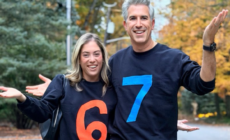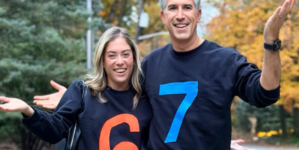-
WWE Veteran Moves Into New Exciting Role: Report - 11 mins ago
-
Trump calls Putin test ‘inappropriate’ - 24 mins ago
-
Prime Minister Viktor Orbán Meets Pope Leo XIV - 35 mins ago
-
Former WWE Star Throws Shade at Brock Lesnar During MLW Show - 50 mins ago
-
Prime Minister Viktor Orbán Meets Pope Leo XIV - about 1 hour ago
-
Barclays CEO issues warning about US credit risks - about 1 hour ago
-
Saquon Barkley tunes out noise on slow start: 'The same player I was last year is still here' - 2 hours ago
-
Parents’ 6-7 Halloween Costume Goes Viral: ‘God’s Work’ - 2 hours ago
-
Budapest Airport Unveils Winter Schedule with New Flights and Record Capacity - 2 hours ago
-
Buccaneers’ Anthony Nelson makes interception, trucks Saints’ Spencer Rattler, and scores touchdown - 2 hours ago
Farmer: Why Do Our Dietary Guidelines Recommend Healthy Vegetables the Least? | Opinion
As the U.S. prepares to update its dietary guidelines for Americans, our nation has a chance to make one of the most transformative public health decisions in a generation—by putting a humble, homegrown food at the center of the plate.
Pulses—beans, lentils, chickpeas and peas—have been grown by American farmers for generations, cost less than $2 a pound and have the power to prevent thousands of deaths each year. Despite their remarkable health benefits, the current dietary guidelines recommend eating less of them than nearly any other vegetable.
That’s not just a missed opportunity for public health—it’s a missed opportunity for America’s farmers. Updating the guidelines to reflect the science could expand a domestic market for pulses, strengthening rural economies while helping millions of Americans eat better and live longer.
As a farmer, I’ve seen firsthand how versatile and nutrient-dense these foods are. Whether added to a salad, a soup, or a side dish, pulses make every meal healthier. But right now, in our dietary guidelines, the serving size of these nutritional powerhouses is among the lowest of any other vegetable variety, despite their proven ability to prevent chronic disease.
The statistics of the health crisis are sobering. Heart disease remains our leading killer, claiming over 919,000 lives annually. Diabetes affects 38 million Americans, with health care costs exceeding $327 billion yearly. Colorectal cancer strikes nearly 150,000 people each year. These preventable tragedies can be dramatically reduced through dietary interventions.
Health and Human Services Secretary Robert F. Kennedy Jr. has called for a reform of our dietary guidelines to help “Make America Healthy Again (MAHA).” While recent headlines have focused on whether beans should replace other forms of protein, that debate misses the larger point. Americans need more options to help them eat healthy, nutritious foods—not less.
Pulses are one of the most versatile, nutrient-packed additions to any diet, whether you’re eating pork and beans or topping a spinach salad with chickpeas. By adding them to more plates, we can double down on disease prevention through proven nutrition.

A single half-cup serving adds protein and delivers 25 percent of our daily fiber needs. This matters profoundly when only 5 percent of Americans consume adequate fiber, a nutrient critical for gut health, heart function and cancer prevention. In the world’s Blue Zones, where people often live to be 100 years old or older, it’s no surprise that residents typically consume at least half a cup of beans daily.
Studies consistently show that regular consumption of pulses lowers cholesterol, stabilizes blood sugar and supports weight loss. The powerful combination of protein and fiber in these foods naturally triggers GLP-1 production that makes us feel full and satisfied. That’s the same hormone behind today’s modern weight-loss drugs without the prescription or price tag.
Well known for their affordability, beans, peas, lentils and chickpeas deliver premium nutrition at a fraction of the cost of other vegetables and proteins. They’re rich in potassium for blood pressure control, compounds that fight inflammation and folate for cellular health, which is particularly important for a healthy pregnancy.

Despite being recognized for their superior nutritional range in the U.S. dietary guidelines, beans, peas, lentils and chickpeas are tied for the least recommended vegetable at 1.5 cups per week compared to 5 cups for starchy vegetables or 5.5 cups for red and orange vegetables.
The path to preventing chronic disease starts with a simple change. As Secretary Kennedy and Agriculture Secretary Brooke L. Rollins finalize our dietary guidelines, raising the beans, peas and lentils consumption recommendation to 2.5 cups per week could transform public health. This would align pulses more closely with recommendations for other vegetables, which would make America healthier with nutritious American food.
Tim D. McGreevy grows pulse crops on his farm near the Washington-Idaho border and serves as the CEO of USA Pulses.
The views expressed in this article are the writer’s own.
Source link





























